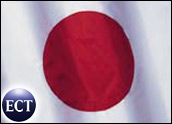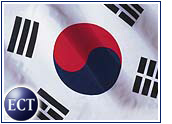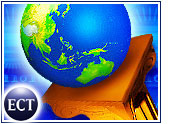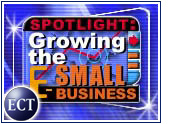
Japan accounted for nearly 70 percent of e-commerce in the Asian Pacific region in 2000, according to a study released Wednesday by research firm eMarketer.
Notably, although business-to-business (B2B) spending in Japan accounted for a dominant portion of the country’s US$27.3 billion slice of the e-commerce pie, business-to-consumer (B2C) spending in the region is expected to gain ground over the next few years, eMarketer said.
While B2C revenues will grow by 1,018 percent, going from $2.2 billion in 2000 to $24.6 billion in 2004, B2B revenues will grow by 615 percent, from $25.2 billion to $180.2 billion.
“Japanese Internet users generally display enthusiasm about the prospect of e-commerce and display a willingness to try it,” eMarketer said.
Asian Plateau
eMarketer’s “eAsia Report” found that e-spending in the Asia-Pacific region accounted for 13.8 percent of the $285.88 billion that was spent online worldwide in 2000.
However, eMarketer predicted that Asia-Pacific’s share of global online spending will peak at 14 percent, or $76.8 billion, in 2002 and then shrink to 10.6 percent by 2004.
“Even though total Asian e-commerce revenues will increase substantially over the next few years, the region as a whole still accounts for only a fraction of the total revenues on a worldwide basis,” eMarketer analyst Eddie Cheung said.
Despite Japan’s overwhelming support of e-commerce, other countries are also likely to see impressive growth in the next few years, according to the research firm. By 2004, Japan’s piece of Asia’s e-commerce pie will shrink to 61 percent, eMarketer said.
Hills and Valleys
eMarketer noted that the Asia-Pacific region is far from homogeneous, in that even though some countries are registering significant e-spending levels, others — including the Philippines, Malaysia, Indonesia and Vietnam — are far behind the curve.
“Widespread poverty [in Vietnam] will prevent e-commerce from developing as rapidly as it has in more wealthy Asian countries,” eMarketer said.
Even so, the firm believes that the Philippines are ripe for a turnaround.
“The volume of e-commerce transactions in the Philippines relative to the world is minimal,” eMarketer said. “As Internet usage continues to gain acceptance and consumers gain more confidence with online transactions, these figures should grow steadily.”
Several Barriers
Barriers to B2C in Asia-Pacific vary from country to country. In poorer nations such as China and India, eMarketer said, e-commerce is stifled by low rates of Internet penetration, limited personal compuer ownership and a low level of credit card usage.
India’s Internet penetration rate is only 0.3 percent and China’s is only marginally better at 0.9 percent. By comparison, Singapore’s penetration rate is 36.2 percent and the U.S. rate is 39.8 percent.
In some of the more wealthy countries, including Singapore, Japan and Australia, e-commerce barriers are similar to those in the U.S. and include concerns about credit card safety, the inability to see or feel merchandise, and privacy concerns, according to eMarketer.
Looking Ahead
Overall, eMarketer expects B2B transactions to fuel growth of e-commerce in the Asian Pacific region from $39.4 billion in 2000 to more than $338 billion in 2004.
The largest gain is expected to come in India, with e-spending in the country growing 4,929 percent, from $121.3 million in 2000 to $6.1 billion in 2004.
Other countries looking at dramatic growth include China, which will grow 2,797 percent from $818 million to $23.7 billion, and Hong Kong, which will grow 1,322 percent from $668.7 million to $9.5 billion, eMarketer said.
Consumer Courage
Although businesses will continue to outspend consumers online, B2C spending in the region as a whole is also expected to grow more rapidly than B2B spending, according to eMarketer.
B2C is expected to grow by 1,088 percent, leaping from $3.2 billion in 2000 to $38 billion in 2004. By comparison, B2B spending will grow by 730 percent, from $36.2 billion to $338 billion.
B2B’s share of total e-spending will drop from 92 percent in 2000 to 89 percent in 2004, eMarketer predicted.![]()

















































Social Media
See all Social Media